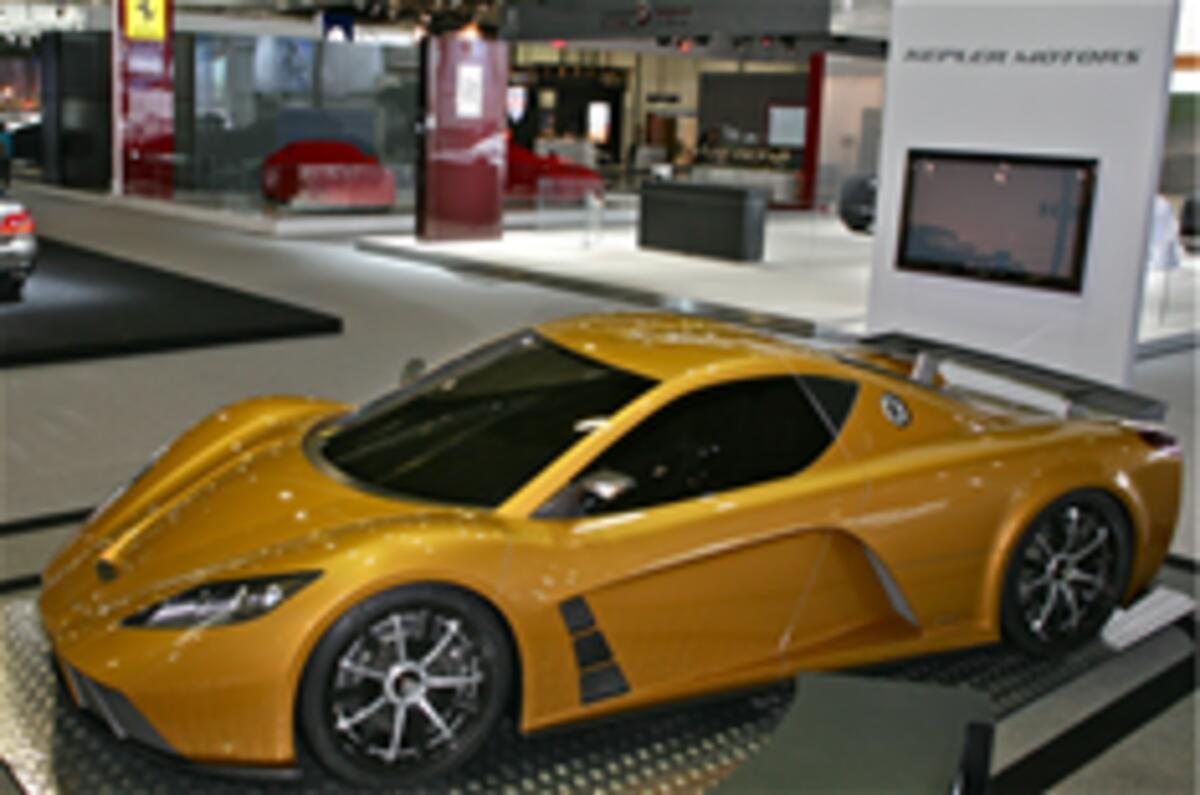A 789bhp hybrid supercar has been launched at the Dubai motor show by Kepler Motors.
The Kepler Motion features a unique all-wheel drive system, which consists of a 542bhp twin-turbo Ford V6 engine powering the rear wheels and an independent 247bhp electric motor powering the front wheels.
Kepler Motion hybrid supercar pics
Kepler claims the two-seat Motion can get from 0-60mph in just 2.5sec and go on to reach a top speed of more than 200mph.
Kepler Motors is funded by Russ Wicks, an American who hold land speed records on both land and water.
The company said it had designed the car from the ground up, using hand-picked design engineers, aerodynamicists and product developers.
Tech features include an active suspension system, active aerodynamics and launch control. Carbonfibre composites have been used for its monocoque chassis and body panels to keep its kerb weight to a minimum.
The Kepler Motion will be hand built, with first deliveries starting in 2011. Just 50 units will be built and sold to a “small, exclusive and elite group of individuals”. No pricing has been released.





Join the debate
Add your comment
Re: Kepler's 789bhp hybrid supercar
I really like the look of this car, apart from the flares on the rear arches, which make the stunning, tidy design look slightly kit-car-like.
I've often pondered on this idea and thought that a generator powering the motors, with only a small amount of buffered power, would be the best solution.
The article, even in its original form from which this copy has been lifted, doesn't say whether the electric motors are powered mostly by a battery or by a generator. Given the limits of today's technology, I wonder what would ultimately be the best package when all elements are taken into account.
A generator producing the bulk of the electricity would take energy from the engine and effectively render the power going to the directly driven wheels diminished by the amount supplied to the motor. Clearly, in this case, the total output of the car cannot be more than the output of the engine.
It could be misleading, therefore, to imply that the car has a combined power delivery of 789bhp, since at no point can 542bhp be supplied to the rear wheels while 247bhp is being supplied to the front wheels.
Considering the weight and horrific toxicity and inefficiency of batteries, surely it's better to use the method I've described rather than adopting batteries simply in order to submit to a quasi-virtuous trend.
Design has to be about the most effective way of achieving efficiency and performance and not worthiness. Regardless of any political parading, it seems to make perfect sense to have drivetrains that combine a direct transmission and supplementary electric drive.
Hybrid systems could create all sorts of interesting configurations - perhaps even a six-wheel-drive performance car, previously nigh-on impossible to implement, could come to life and be zooming around out there in no time.